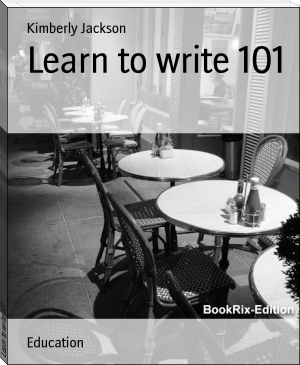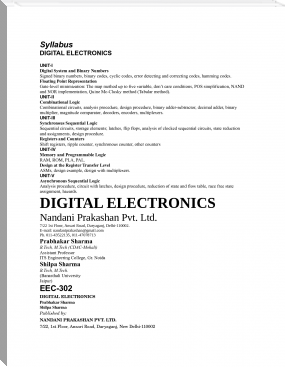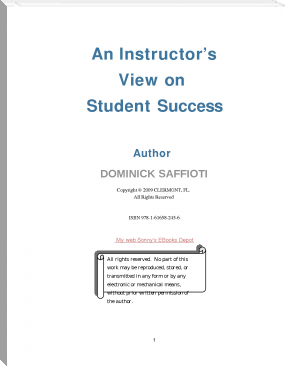Learn to write 101 by Kimberly Jackson (free e novels TXT) 📖

- Author: Kimberly Jackson
Book online «Learn to write 101 by Kimberly Jackson (free e novels TXT) 📖». Author Kimberly Jackson
sub•ject (sub´-jikt) n.
A word or phrase in a sentence that denotes the doer of the action, the receiver of the action in passive constructions, or that which is described or identified.
That sounds pretty good in American Heritage, but all you really need to know about a subject is: a sentence has got to have one!
To find out which word is the subject of a sentence, just ask yourself two questions:
1. What's going on (or being described)?
2. Who or what is doing whatever is going on (or being described)?
If you can answer question 2, you've found the subject.
Let's take a look at some examples:
1. The butcher saves the scraps for his dog.
2. The dog devours them quickly.
3. The butcher was a good man.
4. The dog was quite satisfied.
5. Shelties and cocker spaniels are good pets for small children.
Ask yourself the two questions about each of these sentences. Decide what's going on or being described, and then ask yourself who? or what? is doing it or being described. You can see that in numbers 1 and 2 the butcher and the dog are doing something. They are the subjects.
In numbers 3 and 4, the butcher and the dog are being described. Again, they are the subjects. Pretty easy, huh? In number 5, you can see how a sentence may have more than one subject, shelties and cocker spaniels.
If you back up to the dictionary definition, it says something about the subject being the receiver of the action in a passive construction. Consider the next sentence:
The dog was given a bone.
There the dog receives the action--and the bone!--so it's the subject. But don't worry too much about passive constructions right now. We'll get back to them later.
This is awfully simple, but if you can't clearly identify the subject of a sentence, you're going to get into trouble later on when we talk about some of the harder stuff. For more help in identifying subjects, see the section on prepositions. 'Nuff said.
There's a "Self-Test" available on Subjects and Verbs, but you should review Verbsfirst.
verb (vûrb) n.
A part of speech that expresses existence, action, or occurrence.
Remember question one for identifying subjects? "What's going on (or being described)?" Answer that and you've found your verb. And like a subject, a sentence has got to have one!
Let's look at a few more examples:
1. Lassie ran into the burning building.
2. The beagle stepped on its ears.
What's going on in these sentences? A couple of dogs are doing stupid things; but what they are doing is the verb--in this case, Lassie ran and the beagle stepped . Both show action.
Got the idea? Now let's look at verbs that are a little different. Some verbs don't show action. Instead, they link the subject to some other information: these are called, big surprise, linking verbs . Common linking verbs are "to be" forms--such as, is, am,are, was, were--and the verbs appear, become, feel, look, seem. Examples are:
1. She was fond of her animals.
2. Pierre is a fine beast.
3. She looks like she has been in a fight with a cat.
4. It feels damp in the grass.
In identifying the verb, you also need to look for the helpers, since they are considered part of the verb. The helpers (aka auxiliaries) include: is, am, are, was,were, been, has, have, had, do, does, did, may, can, might, shall, will, should, could,would.
I've marked the complete verb in the following:
1. I was barking before breakfast.
2. He should have let me out of the house.
3. I tried to wait for him to get up.
4. He should not have stayed in bed so long.
5. I barked and waited until. . . .
I guess you can figure out what happened at the end of this little story. It's an all-too-frequent part of a dog's life. . . . But about the verbs.
Notice what is not included in the verb in numbers 3 and 4: to wait and not. Words with to in front of them are never a part of the verb, even though they look suspiciously like verbs. Words like not, always, just, never, and only are not part of the verb.
Remember how a sentence can have more than one subject? It can also have more than one verb, as you see in number 5. One other thing: no word with an "-ing" ending can ever be the verb without a helper: I barking; she running? No way!
prep•o•si•tion (prê´e-zish´en) n.
A word that indicates the relation of a substantive to a verb, an adjective, or another substantive.
I'm not sure I understand that definition, but it doesn't matter. Our only interest in these little words is how they can help us in finding subjects--or, better said, in how they can show us what can't be the subject.
A phrase is a group of words. A prepositional phrase is one that begins with a preposition, such as at, before, beside, between, by, during, for, from, in, over,under, with. You get the idea. If you find a word in a prepositional phrase (e.g., "in the doghouse," "across the street," "under the house"), it can't be the subject.
So when you have trouble finding subjects, just get rid of the prepositional phrases. That will narrow your search to what's left. Take a look at the following: (I've bolded the subjects and verbs for browsers that do not support the strike through tag.
1. During the football game, I snuck into the kitchen.
2. The scraps from dinner were in the garbage.
3. Except for ol' Doc, no one was at home.
4. With one nudge, I pushed the can on its side.
5. Until the end of the game, I could snack on the scraps with no fear of interruption.
See how easy it is to spot the subject once you cut the stuff that can't be one? Pretty simple, but it may come in handy when we get to subject-verb agreement.
Here you're going to need to know something about clauses, since comma-splices andfused sentences deal with two clauses that are incorrectly punctuated. (Some people call them run-ons.) Look at the following:
1. I leave muddy paw prints on the kitchen floor I get in trouble.
2. I leave muddy paw prints on the kitchen floor, I get in trouble.
Neither of these is correct. The first runs two main clauses together without any kind of punctuation. This is a fused sentence. The second joins two main clauses together with only a comma. This is a comma-splice. Both will get your instructor's attention!
What's the problem? Each main clause expresses a complete thought. If you run two or more complete thoughts together without the right punctuation, they tend to blur. And the whole idea behind any kind of communication is to get your point across clearly, right? Anything that takes away from that should be avoided.
What's the solution? Don't do it! How you "Don't do it!" is really pretty easy, since there are four ways to get rid of comma-splices or fused sentences. Find the problem clauses and
o separate them with a period (.).
I leave muddy paw prints on the kitchen floor. I get in trouble.
o join them with a coordinating conjunction.
I leave muddy paw prints on the kitchen floor, and I get in trouble.
o separate them with a semicolon (;).
I leave muddy paw prints on the kitchen floor; I get in trouble.
o subordinate one clause.
When I leave muddy paw prints on the kitchen floor, I get in trouble.
Which is best? They're all correct, so the choice is up to you. Just decide which way sounds the best with the rest of the sentences around the problem.
That's all you need to know about comma-splices and fused senten
The Doc has some fancy words for joiners like coordinating conjunctions, conjunctive adverbs, and who knows what else. But hey, a joiner is a joiner. Knowing their names is good, but knowing how they work is better!
Remember what I said about comma-splices and fused sentences? One way to correct them is to join two main clauses with a coordinating conjunction. You're thinking, "Fine, but what are they?" Just think "FANBOYS" and you have every single one of them:
For, And, Nor, But, Or, Yet, So . . . FANBOYS
Sure it's silly, but it's easy to remember. Look at the following examples and pay attention to where the commas go:
1. He threw the Frisbee, and I caught it.
2. I ran after the cat, but I couldn't catch it.
3. He filled up her food bowl, yet she wouldn't eat.
4. They wanted to go walking without me, so I gave them my saddest look.
5. I scratched my ear, for there was a bug in it.
(The use of for in the last sentence may sound funny to you. You'd probably be more comfortable with because. That's okay. Both are correct, but if you use because, drop the comma in this construction. Review the comments on punctuating subordinate clauses if you need to.)
Just pick the joiner that makes sense in your sentence, and put a comma in front of it. That's all there is to using coordinating conjunctions.
The second kind of joiner is a little different. Like the "FANBOYS," it joins two main clauses, but it also works as a transition (that is, it shows a logical relation between them).
Probably the most common transitional joiners are therefore and however. Others are:also, thus, in addition, otherwise, instead, as a result, meanwhile, on the other hand, and consequently.
With these, you have to watch your punctuation. You need a semicolon to separate the two main clauses and a comma after the joiner. (If you only use a comma between the two main clauses, you've created a comma-splice.)
1. I wanted to play in the backyard ; therefore, I went to the door.
2. I scratched and barked ; however, I couldn't get his attention.
3. Maybe he was working at the computer; on the other hand, he could have been asleep.
These should give you the idea; however, remember that we're talking about joiningtwo main clauses. Sometimes you'll find one of these transitional joiners used differently. For instance:
o He wanted to play. I, however, wanted to sleep.
o Peggy always tries to eat my food. Doc, therefore, always puts it on the kitchen table when I'm not eating.
Here, however and therefore do not join anything--they simply interrupt the flow of thought in the sentence. That's why they're only set off with commas.
Like most grammar basics, joiners aren't that hard to understand or to use. Just watch your punctuation, and you should have no problems
I got a hold of some bad pork chops the other day, and they didn't agree with me. Stomach aches aren't very pleasant. Don't you agree?
We all know these meanings of "agree," but when we talk about subject-verb agreement, we're talking about something different: matching subjects and verbsaccording to number. That is, when you have a singular subject, you have to match it with a singular verb form: The boy plays. When you have a plural subject, you must have a plural verb form: The boys play.
In short, simple sentences, you should have no problem with agreement. You can hear the problem: The boys plays. When it's wrong , it just sounds funny. However, there are four potential problem spots that you need to watch carefully:
o stuff in between the subject and verb
o reversed sentence order
o "-body," "-one," and "-thing" words
o "who," "which," and "that"
Stuff in between subjects and verbs
The stuff here is usually a prepositional phrase that separates the subject from the verb. Remember how we crossed out prepositional phrases in order to find the subject? (For a quick review, click here.) Do the same thing
 The desire to acquire knowledge about the surrounding world and human society is quite natural and understandable for a person. Life is so developed that an uneducated person will never occupy a high position in any field. Humanity in its mass, and each person individually, develops objectively, regardless of certain life circumstances and obstacles, but with different intensity. The speed of development depends on the quality of training.
The desire to acquire knowledge about the surrounding world and human society is quite natural and understandable for a person. Life is so developed that an uneducated person will never occupy a high position in any field. Humanity in its mass, and each person individually, develops objectively, regardless of certain life circumstances and obstacles, but with different intensity. The speed of development depends on the quality of training.




Comments (0)